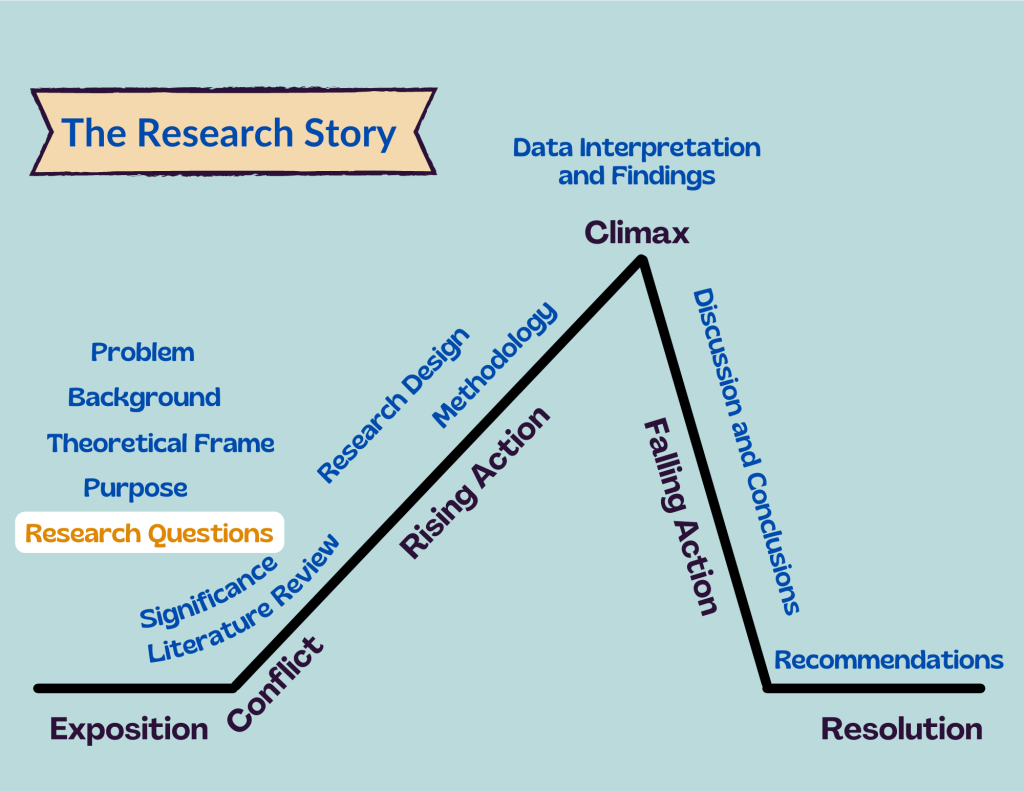Research Components
9 Research Questions
The story continues…
Another day, another piece of cheese … the mice are still in Harry’s house and Pickles is still not catching the mice. But now, Harry and Physicus have a hunch about Pickles being overwhelmed by the number of mice.
Physicus asked Harry, ” What do you want to know now?”
Harry wanted to test the hypothesis of Pickles being overwhelmed by seeing too many mice at once. “Well,” said Harry, “I want to know if Pickles will attack any mice and how many mice causes Pickles not to attack.”
Physicus replied, “So, maybe your research questions are something like…How many mice will Pickles attack at one time? How many mice causes Pickles not to attack?”
“Right!” said Harry. “This would tell me how to solve the problem. If I know how many mice will cause Pickles not to attack, then I can control the number of mice Pickles encounters at a time. Then Pickles will get rid of all the mice and solve my problem!”
Interpreting the Story
The friends now form questions they will use to test their hypothesis about Pickles’ motivation to attack the mice. The first question about how many mice Pickles will attack is important. This tells Harry that Pickles will attack the mice. Since the number of mice seems to influence Pickles’ motivation, then finding the maximum number of mice Pickles will attack at one time provides valuable information. The answers to these research questions will fulfill the purpose of Harry’s research project, which was to save his cheese by finding how to get Pickles to hunt the mice.
Harry’s research questions:
- How many mice will Pickles attack at one time?
- How many mice in the room causes Pickles not to attack?
The Research Questions
The Research Questions express what data you seek in the project. The research questions are precise, cover the problem to be addressed, and indicate whether data are collected qualitatively or quantitatively. Research Questions also connect the problem to the theoretical frame. These are written in such a way that when the questions are answered, the results will fulfill the purpose.
The Research Questions are crafted to obtain a single numerical result or are crafted with open-ended questions. Research questions are never answered with a “yes” or “no” response. Instead, research questions use phrases, such as “to what extent,” “how frequently,” etc. to express the intended result.
How the research questions are phrased guides how to collect the data to answer the question. If the questions ask how frequently, then the data collected would need to be frequency data. If the question refers to average assessment scores, then the data would be average scores. This is an important consideration in building a research project.
The Research Questions heading is written as a list of numbered questions. Generally, there are four or five questions. The heading does not need a narrative unless required by an instructor or institution. Simply stating, “The following questions will guide the project:” is usually sufficient.
Telling the Research Story
The Research Questions heading asks the questions that guide the research story. The questions address the conflict, relate to the point of view, and guide the plot of the story (methodology). The questions are answered in the climax of the research story and guide how the story will resolve in the end. The questions also increase the tension and anticipation in the story. The Research Questions heading appears in Chapter 1 of the thesis, and dissertation. A literature review project does not have this heading.


